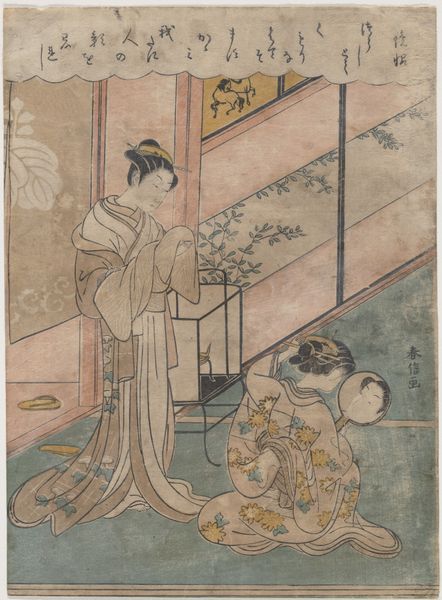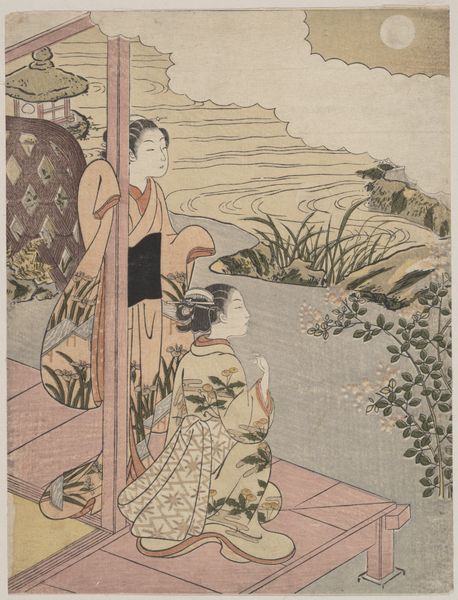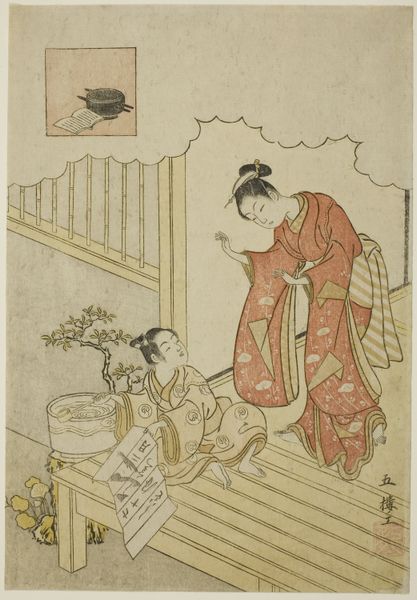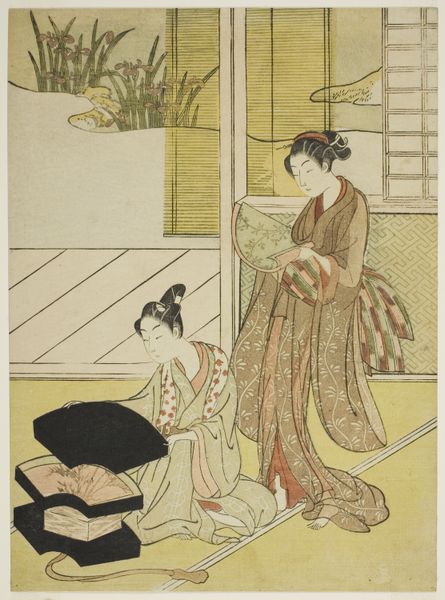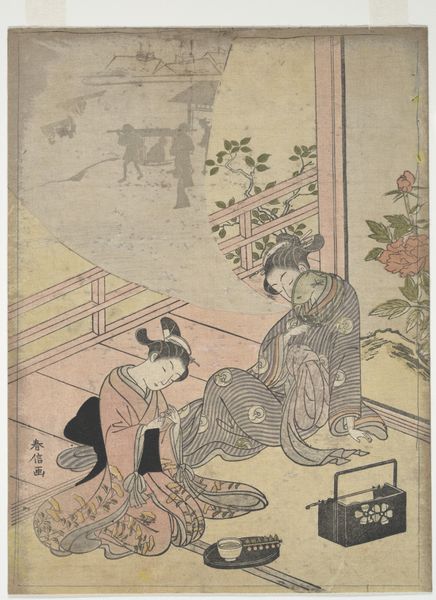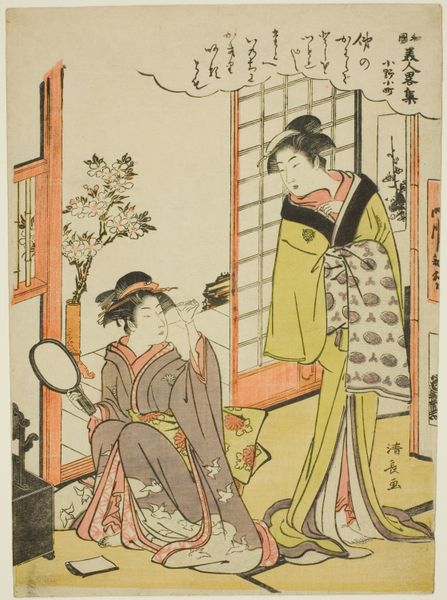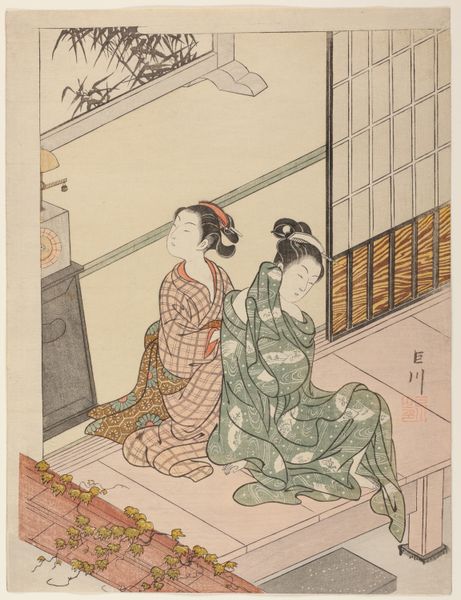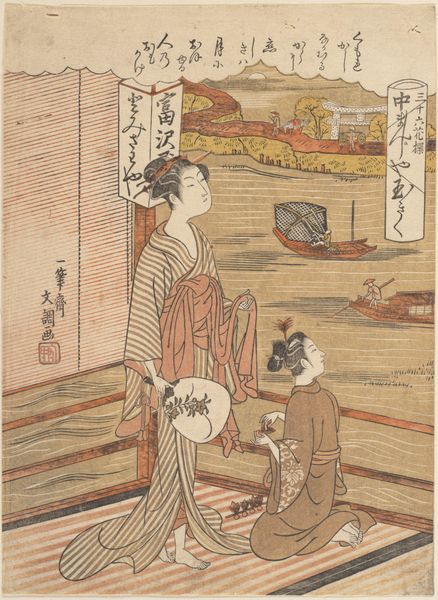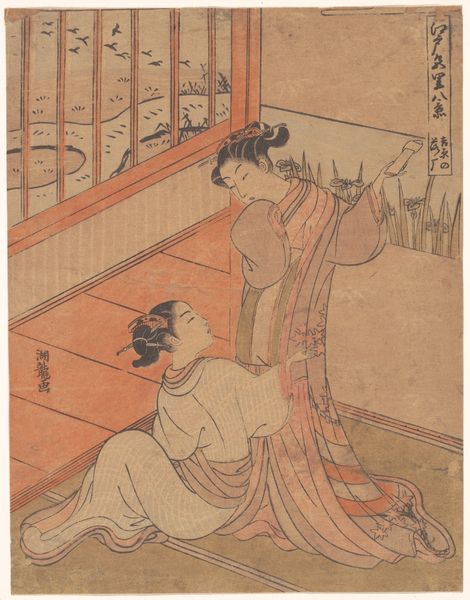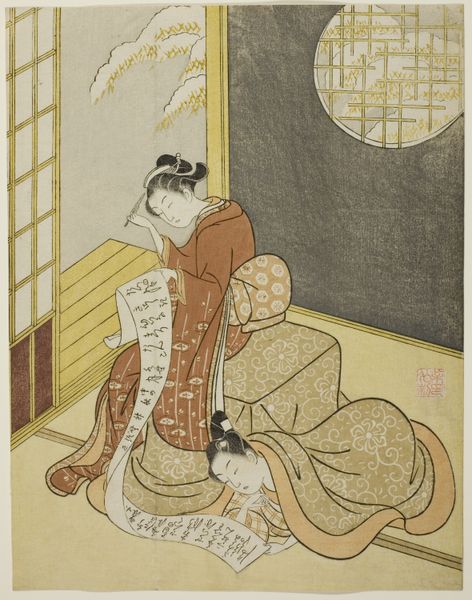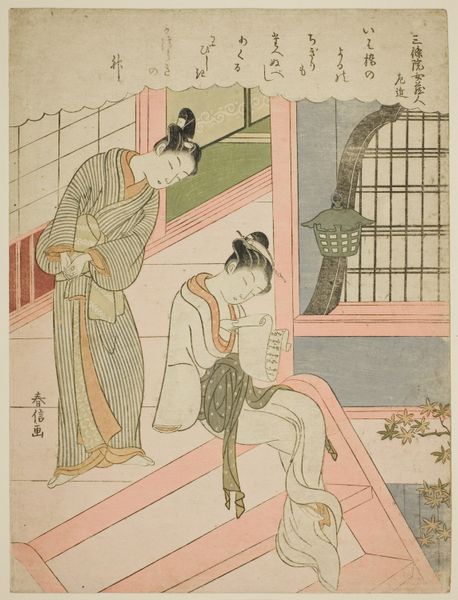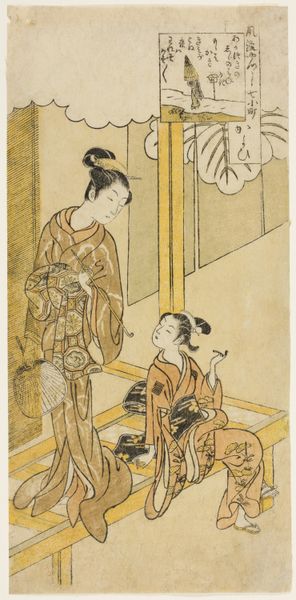
Returning Sails at Shinagawa (Shinagawa no kihan), from the series "Eight Fashionable Views of Edo (Furyu Edo hakkei)" c. 1768 - 1769
0:00
0:00
print, woodblock-print
#
portrait
# print
#
asian-art
#
landscape
#
ukiyo-e
#
woodblock-print
#
genre-painting
Dimensions: 26.8 × 19.3 cm (10 1/2 × 7 1/2 in.)
Copyright: Public Domain
Curator: This exquisite woodblock print, "Returning Sails at Shinagawa," comes to us from Suzuki Harunobu's "Eight Fashionable Views of Edo," dating from around 1768 to 1769. It's truly breathtaking. Editor: Yes, those muted colors just radiate tranquility! And the sheer flat expanse of the bay visible through the latticed window – it's so still and serene, like a little paper theatre of daily life. Curator: Harunobu, with his ukiyo-e sensibilities, invites us into this intimate scene. You notice, don't you, how the interior and exterior spaces are seamlessly connected, blending personal narrative with landscape? There are two women in what might be a tea room—and is that a small dog looking out towards the sea? Editor: Right, there's labor in the foreground here. The production of textiles and even just making tea were activities with very material underpinnings. The soft hues do little to veil the commodification that sits behind all the objects—the silks, the tea—that the figures enjoy. What was the work process to produce these woodblock prints at this time? Curator: A real dance of labor, actually! A publisher commissioned the artist, in this case Harunobu, who'd then create a design. This would be handed over to a block cutter to carve the image into woodblocks—one block for each color. And then a printer would apply ink to these blocks and press them onto paper. This piece, because of its subtle hues and the complexity of layering colors, must have taken exceptionally skilled hands. Editor: Absolutely! It brings a renewed understanding of production as it exists beyond singular genius, an approach too commonly imposed onto aesthetic value. The layered production and material implications involved give the piece another layer to appreciate. Curator: In fact, this makes me reflect on Shinagawa itself, during that era, as both a literal and imaginative space. For me, Shinagawa becomes this transitional zone, blurring the lines between reality and reflection, haven and horizon, work and dream. What a window! Editor: Agreed. In this regard, Harunobu allows us to appreciate, even celebrate, all those unglamorous transactions and labor that built these 'views' that otherwise just feel effortless and floaty, like returning sails.
Comments
No comments
Be the first to comment and join the conversation on the ultimate creative platform.

